Introduction
If you work with athletes who train hard, as many sports physiotherapists do, then you will have encountered exercise induced muscle damage or delayed onset muscle soreness (DOMS). It is also likely that the suffering athlete has come to you and said “I’m so sore from that workout – can you do anything?”. There are many widely used post workout and recovery strategies that are touted as effective at enhancing an athletes recovery from high intensity exercise. However, as is frequently the norm in sports medicine, the evidence for their use is mostly anecdotal rather than based on high quality clinical trials. Fortunately, a new review recently published discusses the effectiveness of physiotherapeutic interventions following high intensity exercise (Torres et al., 2012).
Evidence of Physiotherapeutic Interventions for DOMS
A new systematic review and meta-analysis from Torres et al (2012) has evaluated the effectiveness of various physiotherapeutic interventions on exercise-induced muscle damage or delayed onset muscle soreness (DOMS). The review included 35 randomised controlled trials which evaluated the effectiveness of the following treatments on outcomes of “muscle soreness” and “muscle strength”:
- Massage
- Cryotherapy (in the form of ice baths)
- Stretching
- Low Intensity Exercises
The authors found some interesting results that may question and challenge many of the current accepted “recovery” practices following high intensity exercise. The evidence for each intervention, as shown by the Torres et al (2012), is discussed below.
Massage for Exercise Induced Muscle Damage (DOMS)
9 included studies examined the effectiveness of massage following high intensity exercise. A meta-analysis of the included studies showed a statistically significant reduction in “muscle soreness” after 24 hours, the mean positive result was 0.33cm on a 10cm VAS Rating Scale. Unfortunately, there was no statistically significant change at 1, 48, or 72 hours. With regards to “muscle strength” the meta-analysis identified an improvement only at 1 hour of approximately 1.87% (i.e. no difference at 24, 48 and 72 hours).
Now, let’s ask ourselves is a reduction of VAS pain of 0.33cm at 24 hours and improvement of muscle strength of 1.87% really worth our time i.e. is this clinically relevant? Well, that’s up to you to decide!
Cryotherapy for Exercise Induced Muscle Damage (DOMS)
10 randomised controlled trials evaluated the effectiveness of cryotherapy, in the form of ice water immersion or ice bathing, on recovery from exercise induced muscle damage. The authors could not find support for the use of cryotherapy. The studies showed that there was a statistically significant reduction in “muscle soreness” at 48 (1.22cm) and 72 (2.11cm) hours, however, due to large heterogeneity in studies these results may not be reliable.
With regards to muscle strength there were no positive effects at 1, 48 or 72 hours. There was a statistically significant improvement in muscle strength at 24 hours (6.93%), however, significant heterogeneity meant the results could not be pooled to perform a meta-analysis.
Interestingly, it may be suggested that repeated episodes of cryotherapy may be more effective than a single episode. This was found to be true by 2 of the included studies (Eston and Peters, 1999; Skurvydas et al. 2006), however, their results were contradicted by negative findings of 2 other studies (Goodall and Howatson, 2008; Howatson et al. 2005).
Stretching for Exercise Induced Muscle Damage (DOMS)
9 randomised controlled trials evaluated the effectiveness of stretching, in its various forms, on recovery from exercise induced muscle damage. The included stretching dosages included:
- Before exercise (single episode)
- Before (single) and after exercise (repeated)
- After exercise only (repeated)
The systematic review found no positive effects of any form of stretching for “muscle soreness” or “muscle strength” following exercise induced muscle damage.
Low Intensity Exercise for Exercise Induced Muscle Damage (DOMS)
7 studies evaluated the effectiveness of low intensity exercises on recovery from exercise induced muscle damage. Meta-analysis of the included results showed no statistically significant results at 1, 24, 48 or 72 hours following high intensity exercise.
Take Home Messages
- Massage therapy following high-intensity exercise may produce some mild improvements in muscle soreness and strength for exercise induced muscle damage.
- Cryotherapy displayed mildbenefits at 24 hours only.
- There was no evidence for the use of stretching or low intensity exercise for muscle soreness or strength in exercise-induced muscle damage.
What are your thoughts on this research? Are you shouting at me saying the anecdotal evidence alone is enough? I would love to know your thoughts, so let me know in the comments, or catch me on Facebook or Twitter.
Promote Your Clinic: Are you a physiotherapist or physical therapist looking to promote your own clinic, check this out.
References
Eston R, Peters D. Effects of cold water immersion on the symptoms of exercise-induced muscle damage. Journal of Sports Sciences 1999;17:231-238
Goodall S, Howatson G. The effects of multiple cold water immersions on indices of muscle damage Journal of Science and Medicine in Sport, 2008;7:235-241.
Howatson G, Gaze D, Van-Someren KA. The efficacy of ice massage in the treatment of exercise-induced muscle damage. Scandinavian Journal of Medicine & Science in Sports 2005;15(6):415-422.
Skurvydas A, Sipaviciene S, Krutulyte G, Gailiuniene A, Stasiulis A, Mamkus G et al. Cooling leg muscles affects dynamics of indirect indicators of skeletal muscle damage Journal of Back and Musculoskeletal Rehabilitation, 2006;19:141–151
Torres R, Ribiero F, Duarte JA, Cabri JMH. Evidence of the physiotherapeutic interventions used currently after exercise-induced muscle damage: Systematic review and meta-analysis. Physical Therapy in Sport 2012;13:101-114
Photo Credit: Amber Karnes
Related Posts
Comments






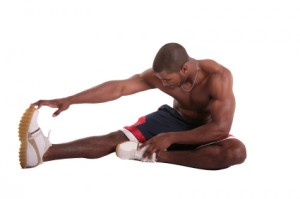


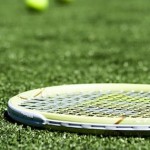
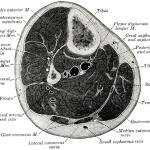
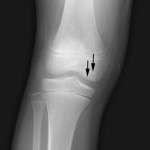
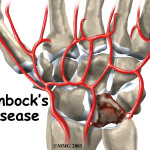
Knows that you left out one critical piece of information pertaining to the benefits of tart cherry juice in virtually preventing the symptoms associated with DOMS. Make sure to read this article which is a bulletproof design…placebo controlled, randomized trial with a washout period. Connolly and McHugh are pros on this front. Cheribundi is the company which has patented the process of extracting the active ingredients and teamed up with cornell medical systems to accomplish this
http://www.ncbi.nlm.nih.gov/pubmed?term=Connelly%20and%20McHugh%20tart%20cherry%20juice
I had a estim company come to my clinic one time with some RCTs to demonstrate the use of motor level estim could decrease DOMS. I do not have the references in hand, but there were one or 2 studies that demonstrated pretty significant improvements in runners following a 26.2 mile race.
Jesse Schulz, PT, DPT